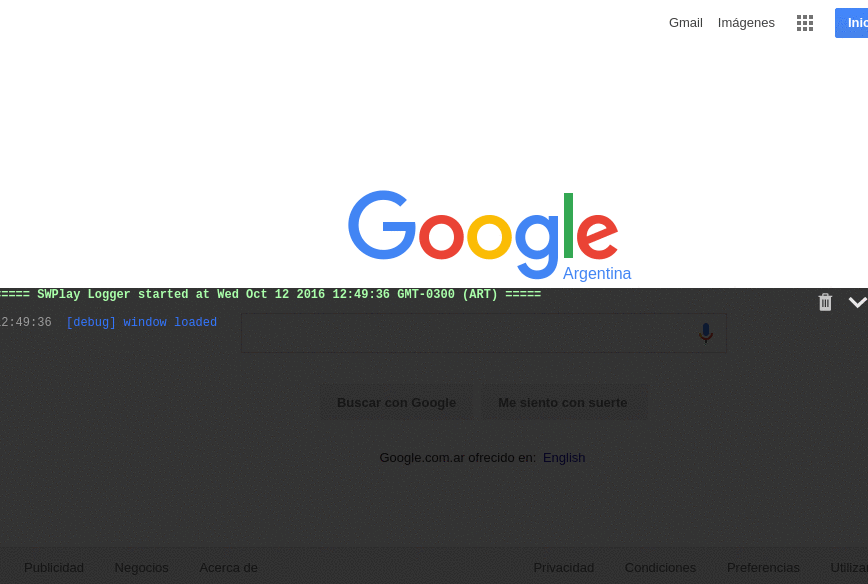1.4.0 • Published 8 years ago
html-logger v1.4.0
html-logger
simple html logger that appends it self to a page's body. based on the idea of http://www.songho.ca/misc/logger/files/Logger.js. written with ES6 syntax and transpiled with babel.io. feel free to hack and improve this.

this logger is usefull when you have to debug on enviroments without access to the web-tools
current release: v1.1.3
install
npm
npm install html-loggerbower i html-loggerusage
html
add the script refence to dist/html-logger.bundle.js and initialize the logger
let logger = new HtmlLogger({name: "Test App"})
logger.init(true) // appends the logger
logger.debug({object: 1})
console.log({obj: ""}) // works with `captureNative` optionnode | electron.io
// preload.js
import HtmlLogger from 'html-logger'
window.onload = () => {
const logger = new HtmlLogger({name: "Test App"})
logger.init(true)
global.logger = logger
}the logger toggles by default with shift+t keys combination
features
- Log levels: info, success, warning, error, debug
- Prints strings, objects and functions
- Log all the arguments. Example:
logger.info("test", { test: true}, "test2") - Captures
window.consolemessages.
api
options
name: string the app name to show on the logger title. defaultHtml Loggerenabled: boolean indicates if logger is enabled. logger prints only when it is enabled. defaulttrueheight: number indicates the logger container height. default420animationDuration: number the animation durations in milli seconds. default200maxLogCount: number the maximun number of lines to persist in the logger view. default40.shortcuts: object ctrl/command shortcutscaptureNative: boolean captureswindow.consolemessages. defaultfalse
console.log -> logger.debug
console.warn -> logger.warning
console.error -> logger.error
console.info -> logger.infobufferSize: number set the buffer length. default 100. This is usefull to get the messages lines and save them to a file.argumentsSeparator: string separator for the messages. default" "level: number logging level. default1. Levels: 0 | DEBUG, 1 | INFO, 2 | SUCCESS, 3 | WARNING, 4 | FATALutcTime: boolean the time stamp uses UTC time. defaulttrueloggingFormat: string format the log message using the keywords TIME, LEVEL and MESSAGE. default"[TIME] [LEVEL] [MESSAGE]". e.g
logger.debug("test")
// result: 18:00:00 DEBUG test"methods
constructor([object] options): initialize the object.init(Boolean show = false): initializes the logger. throws exception if document node == nullshow(), hide(), toggle(): display methodsprint([object] msg, [string - a valid hex color] hexColor, [string] level): append message lines into the logger.setLevel([number] level): set ogging levelsetEnableCaptureNativeLog(Boolean enabled): capture thewindow.consolemessagesgetBuffer(): returns and clean the buffer
develop
install dependencies
npm install -g gulp
npm installrun gulp
run default tasks
gulprun develop task (watch files)
gulp developtesting
use jasmine. see spec/html-logger_spec.js
npm test